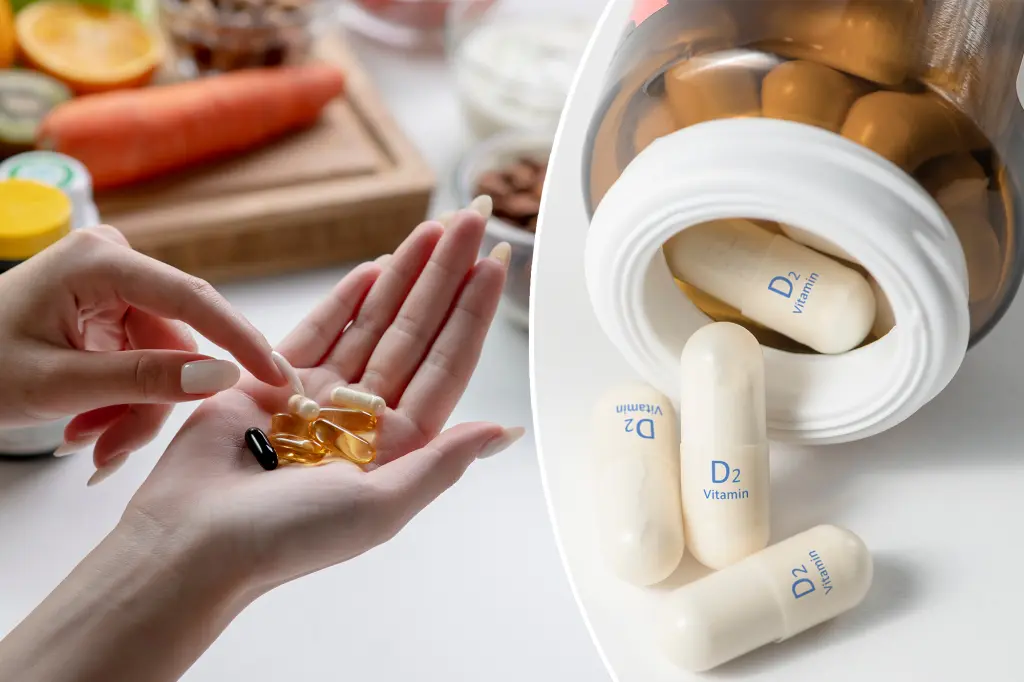The Vitamin D Dilemma: New Research Suggests Not All Forms Are Created Equal
In a world where vitamin supplements are increasingly part of our daily health routines, a new study from the University of Surrey delivers surprising news that might change how we think about vitamin D. While many of us dutifully pop vitamin D pills during darker months, researchers have discovered that the form of vitamin D we choose may significantly impact our health. Their findings suggest that vitamin D2 supplements might actually reduce levels of vitamin D3 in our bodies – a concerning outcome given that vitamin D3 appears to play a crucial role in supporting our immune systems. This research comes at a time when vitamin D deficiency is recognized as a widespread public health issue, particularly during winter months when sunlight exposure is limited for many people living in northern regions.
The study, published in the journal Nutrition Reviews, represents a collaborative effort between the University of Surrey, the John Innes Centre, and the Quadram Institute Bioscience in Norwich, England. Researchers analyzed data from 11 randomized controlled trials involving 655 adults, comparing outcomes between those who took vitamin D2 supplements and those who didn’t. The results were clear: participants taking vitamin D2 supplements showed reduced levels of vitamin D3 compared to non-supplemented individuals. This finding is particularly significant because our bodies naturally produce vitamin D3 when our skin is exposed to sunlight, whereas vitamin D2 comes primarily from plant or fungal sources. The distinction between these two forms has often been overlooked in general health recommendations, with many people simply seeking “vitamin D” supplements without considering which specific type might be more beneficial.
Professor Colin Smith, who led the study, emphasized a crucial discovery about vitamin D3’s unique benefits: “We have shown that vitamin D3, but not vitamin D2, appears to stimulate the type I interferon signaling system in the body – a key part of the immune system that provides a first line of defense against bacteria and viruses.” This suggests that maintaining healthy vitamin D3 levels might help prevent infectious agents from gaining a foothold in our bodies, potentially boosting our resistance to various illnesses. The distinction between these two forms of vitamin D could be especially important during seasons when respiratory infections are common and our natural vitamin D production decreases due to limited sunlight exposure. For many people living in northern climates, winter months bring not only colder temperatures but also increased vulnerability to illness – precisely when optimal immune function becomes most valuable.
Professor Martin Warren, chief scientific officer at the Quadram Institute, highlighted the broader implications of this research, noting that vitamin D deficiency represents “a significant public health concern.” He connected the findings to his institution’s mission of “delivering healthier lives through food innovation to enhance the nutrient density of the food we eat,” suggesting that choosing the most effective form of vitamin D for supplementation or food fortification could substantially impact public health. This perspective recognizes that nutrient recommendations aren’t just abstract scientific questions but practical matters that affect millions of people’s wellbeing. For individuals making choices at supplement counters or grocery stores, this research suggests paying closer attention to whether products contain vitamin D2 or D3, with the latter potentially offering superior immune benefits based on current evidence.
While the findings are compelling, the researchers acknowledge important limitations that call for additional investigation. The analysis included a relatively small number of studies with considerable differences in factors like duration, dosage amounts, timing, and measurement methods. Potential biases from incomplete reporting of details could also affect the conclusions. Furthermore, the researchers noted that results might be influenced by variables such as participants’ sunlight exposure and consumption of vitamin-fortified foods. These limitations don’t invalidate the findings but do underscore the need for further research to clarify the distinct effects of vitamins D2 and D3 on human health before definitive medical recommendations can be made about which form is preferable for supplementation.
For those wondering about dietary sources of these different vitamin forms, vitamin D3 can be found naturally in fatty fish, egg yolks, cod liver oil and fortified dairy and animal foods, while vitamin D2 appears in mushrooms, fortified plant-based foods, and some plant or fungal-based supplements. This research, supported by the Biotechnology and Biological Sciences Research Council (BBSRC), opens an important new chapter in our understanding of vitamin D supplementation. While it doesn’t provide final answers, it raises vital questions about how we approach nutrition and supplement choices. As winter approaches for many readers, this timely research offers food for thought about which form of vitamin D might better support our health through the darker months – suggesting that when it comes to this essential nutrient, the specific form we choose could make a meaningful difference to our wellbeing.


